Every year, VeloVeritas catches up with the CTT National Hill Climb Champion, this year the man who best defied gravity was 31 years-old Tom Bell who rides in the colours of his own coaching concern, High North Performance.
His 3:01.6 ride broke Peter Greenhalgh’s 55 years-old course record for the savage Winnats Pass, set in 1966.
Bell relegated last year’s champion, Andy Feather (HuntBike Wheels.com) to silver by seven seconds with Andy Nichols (Lifting Gear Products) some three further seconds off Feather’s pace.
Here’s what the man of the moment had to say to VeloVeritas:
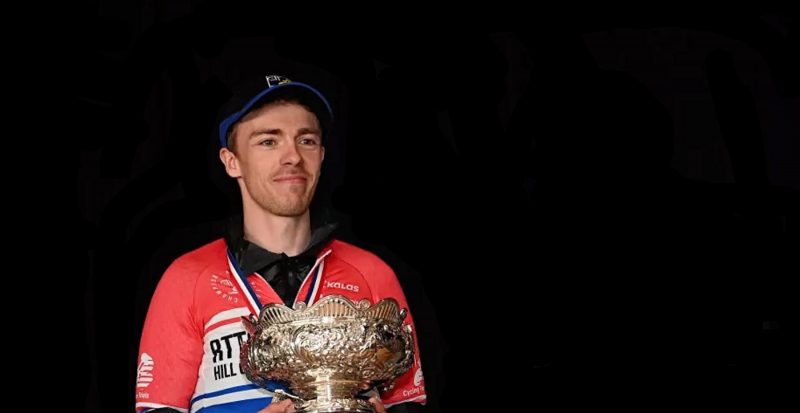
Congratulations, Tom, please describe the beast that is the Winnats Pass to us.
“Winnats Pass is an amazing, iconic climb and as close to a hill climb “stadium” as you could hope to get.
“It’s deceptively steep right from the start, but it gets more and more severe the closer you get to the top.
“You often find yourself fighting against a block headwind as well as the gradient because of how the road cuts through the landscape and funnels the wind too.
“I don’t think there’s anyone who would say it’s an easy climb.”
How were conditions on the day?
“The conditions were pretty atrocious.
“It rained heavily for the entire duration of the event and it was a cold day too, making it really tough to warm up as you would like and to retain that warmth as you stood there waiting to make your bid.
“The wind conditions weren’t particularly advantageous but neither were they terrible either.
“Many riders did reconnaissance rides in the days leading up to the race and were literally getting blown off the road, so I’m sure everyone was relieved it improved a little for race day.”
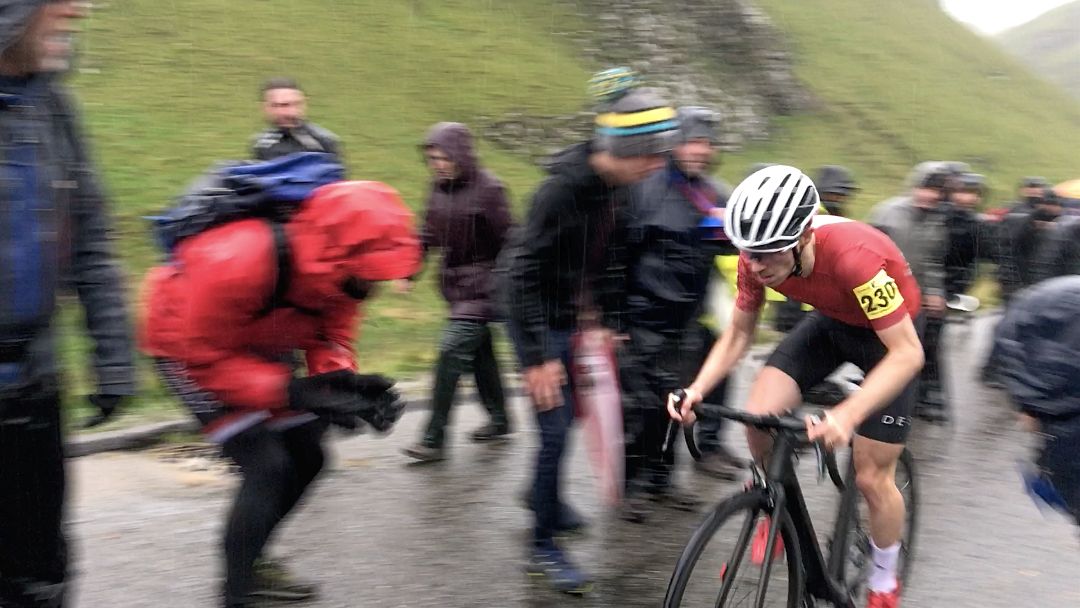
Remind us of your hill climb ‘stats’ for season 2021 please.
“For the 2021 season, I competed in 11 events, and managed to win nine of them.
“I finished in second place in the other two events.”
You were second last year, was that a big motivating factor for this year?
“It was.
“To be so close last year (just over one second back) was a bit rough, but I knew with a climb that suited me better and a slightly improved preparation that I was in with a good chance.
“Last year, I had a nasty crash whilst out training on the road and had to take an entire week off the bike and miss some events in the middle of the season, so I’m certain that had a negative impact on my ride at the 2020 national championships. This season I didn’t have any of those issues thankfully!”
Tell us about your training for the National.
“My training approach to the hill climb season was to lay down a good foundation of volume leading into September, and then the frequency and intensity of the racing itself largely transforms that generalised fitness into the race-specific shape you need for the unique efforts that hill climbs are.
“As the hill climb season is around two months long, you do need to pace yourself and make sure you’re not reaching a peak too early and/or getting burnt out before the final races.
“The race efforts themselves provide a strong adaptive stimulus, so most weeks there isn’t a great need to do heaps of intensity between events – it’s more about recovering and maintaining that aerobic foundation.”
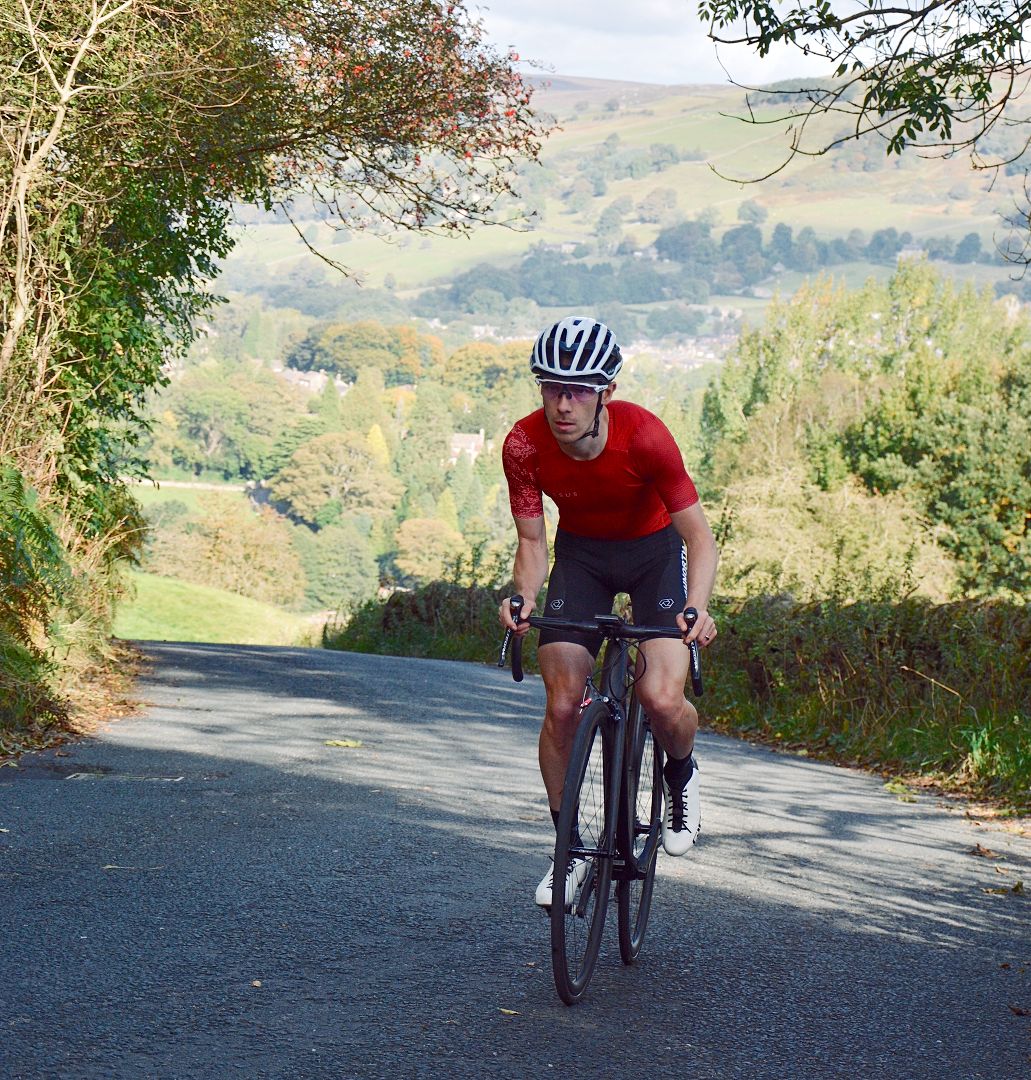
What’s your approach to tapering?
“Tapering is a very individual thing and every rider has their own approach.
“I prefer to scrub off just enough fatigue to ensure that it doesn’t get in the way of a good performance, but I don’t like reducing my training time, intensity or even duration all that much.
“It works best for me if I still feel in my normal training groove.
“There’s a big psychological part of tapering you need to account for too.
“With four or five days to go before the race, I went out and just rode for three hours at a steady effort level, which many would probably scratch their heads at!
“Physiologically and psychologically though, this kind of session has always helped me feel confident my endurance is still intact and that I’m strong in a well-rounded way and I always feel good after these kinds of rides, no matter if I’m going into a 90 minute MTB XC race or a three to five minute hill climb.”
Tell us about your bike – what did it weigh?
“The bike is a fairly understated one.
“It’s a rim-brake Rose X-Lite Team frame, with a mechanical Ultegra groupset and a pair of lightweight carbon tubular wheels.
“I have some great parts from Mt Zoom, MCFK and others on there, and some fast Vittoria Corsa Speed tyres in a 25mm width.
“I run either a 40T or a 38T Wolftooth chainring up front and an 11-28 cassette at the back.
“There’s a single-sided Stages Power meter on the left-hand crank and some Time Xpresso 15 pedals on there too.
“The bike comes in just under 5.5kg – certainly not the lightest you’ll find on the scene, but I think it strikes a nice balance between weight, stiffness and reliability. If I can get it down to 5.2-5.3kg with a few upgrades, I think that would be perfect!”
Your gearing – ‘back in the day’ Winnats was a fixed wheel climb, did you ever consider fixed? And which ratios did you ride?
“Yes, fixed gears still have their followers to this day and of course that was the extent of the technology back in the day.
“Personally I’ve never considered using a fixed-gear bike – I like to have the ideal cadence for myself at all times and even though Winnats Pass could be considered as one of those climbs that is better suited than others for fixed gears, I still think there is enough gradient change for gears to be the best bet.
“As mentioned before, I ran an 11-28 rear cassette paired with a 38T front chainring on the day of the nationals, and that seemed to work perfectly.”
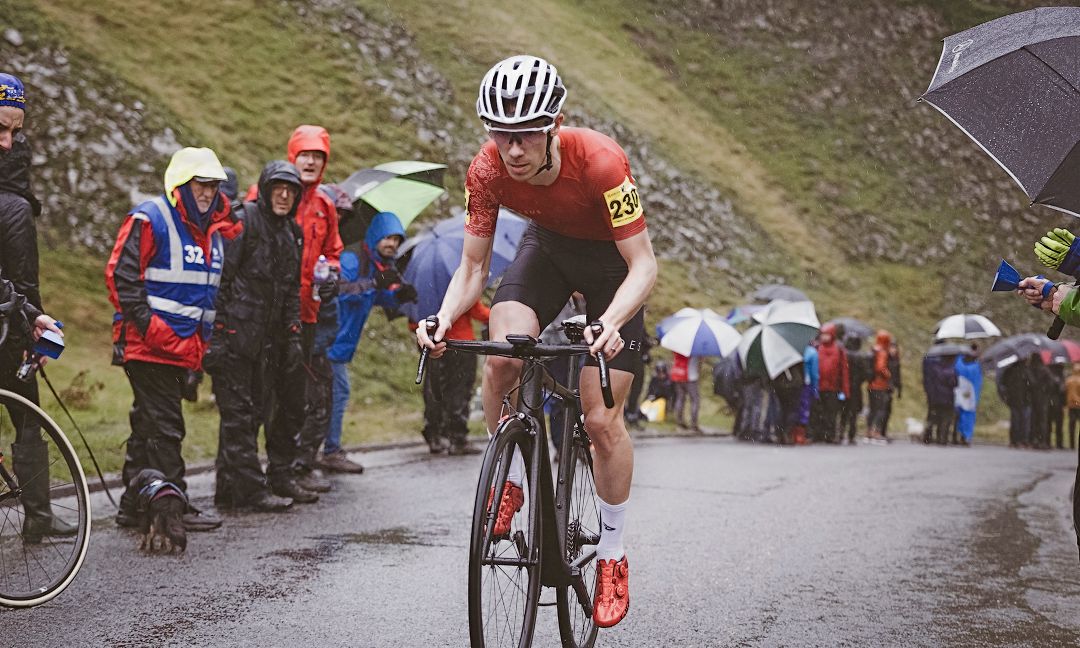
I believe tyre choice was crucial on the day, what did you ride and how did you decide on pressures?
“Tyre choice played a big role in the race, since the climb had a torrent of water running down it because of all the rain.
“I was very conscious that traction would be a factor in the race so I made sure I did my homework.
“I tested a few different tyres on a local climb that I knew got slippery in the wet.
“I settled on a 25mm Pirelli P-Zero 4S tyre, which was light enough but most importantly very grippy in the wet.
“As much as I didn’t want to add weight to the bike by switching to a clincher wheelset and a heavier tyre/tube combination, it meant that I could ride as I wanted on the day with no fear of the rear wheel slipping.
“I actually don’t think tyre pressure makes a whole lot of difference, especially if you’re running a fairly slick tyre.
“I know that is many rider’s go-to solution when traction is a problem, but even at very low pressures, most people were slipping if they hadn’t changed the tyre itself and the same thing was true at The Rake hill climb in Ramsbottom a few weeks prior to the national championships.
“Personally, I think the compound of the tyre is much more important.
“I didn’t have the rear tyre at a particularly low pressure for the race, maybe only 10-15PSI less than I would have under normal conditions.”
What was your pace strategy?
“I really try to focus on having a very clear pacing strategy and my main goal when I compete in hill climbs is sticking to this as closely as possible.
“I know from my training, testing data, reconnaissance rides and by using a few online tools what power output I should be able to hold from bottom to top, almost to the one/two watts.
“It’s then just a case of watching the numbers closely and adjusting my effort accordingly with each pedal stroke.
“It’s really quite formulaic and that’s something I like about hill climbs!”
Can we ask about your ‘numbers’?
“For the national championships, my finish time was 3 minutes 1 second.
“I did around 475-480W for the effort and on the day, I think I weighed a touch under 55kg, so roughly 8.7w/kg.”
Did you diet to improve your power to weight?
“I certainly watched the amount of food I ate more so than in previous seasons before the national championships.
“I’m usually around 57kg, so I always thought I was light enough, but this year it occurred to me that seeing if I could reduce my body weight a little bit without losing much/any power could be an easy win in terms of performance improvement, and I managed to do that pretty easily with only a small decrease in the amount I was eating (think one/two small snacks most days).
“I eat a vegan diet and have done so for years now, so I think it’s naturally pretty good for keeping my weight in check and I’ve luckily never struggled with putting weight on anyway!”
What about riding with a crash hat?
“I get asked about this a lot, as you might imagine!
“First of all, I’d like to say that everyone can make their own choice and I don’t think differently of anyone who chooses not to wear one.
“Personally for me though, it’s about personal safety and setting a good example for the sport.
“Those who see photos and media who aren’t in the hill climbing scene time and again have perplexed reactions to seeing riders competing without a helmet and in this day and age, it’s not something you see very often.
“Any time you’re riding the bike, there’s a danger of falling and hitting your head, and in a hill climb, you can still get up to some fairly fast speeds, you could break a chain or wash the front wheel out on a corner, and of course you have to descend back down the hill afterwards.
“I’ve heard that Cycling Time Trials may have made the use of helmets compulsory for all riders for next year, and if so, I think that’s a big step forward.
“It will bring the discipline up to date, help improve the safety of events and show the sport to the wider cycling and sporting community in a much better light.
“If it’s mandatory, then it’s a level playing field anyway, since everyone will be wearing one, just as they do every other time they get on their bike!
“It was nice to be able to prove that you can win races or perform well in hill climbs with that small additional weight of a helmet and hopefully it can set a bit of an example.”
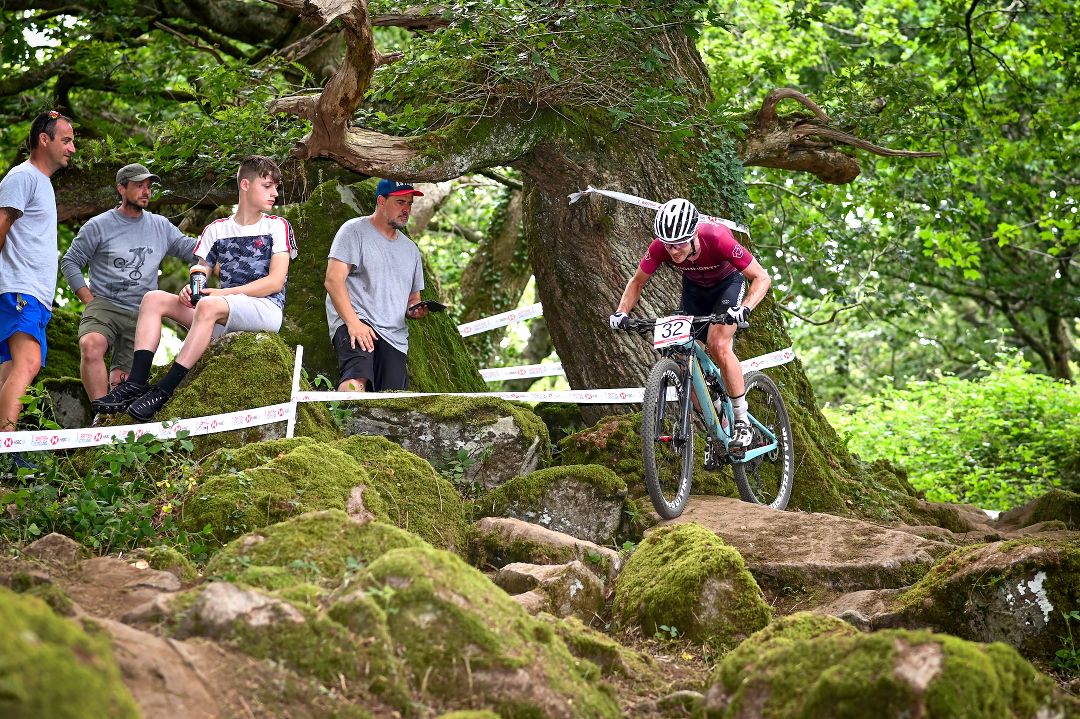
I believe you’re from an MTB background, when did you decide to make a science of anti-gravity?
“Yes, I’ve raced MTB cross-country (XC) and marathon (XCM) disciplines for ages now. [Tom is being very modest, in fact he was 2017 British MTB XCM National Champion and 2018 MTB XC National Championships silver medalist.]
“I haven’t done as much in the last 1-2 years as I normally do, since Covid restrictions meant getting to the normal international UCI and World Cup races I normally compete in very difficult.
“It’s something I’m going to continue to do going forward, and I feel I can still compete well off-road.
“It’s such a demanding sport and trains a lot of the abilities (like a high maximal oxygen uptake, for example) that contribute massively to performance in hill climbs, so as much as it’s a totally different discipline to hill climb TTs, it’s actually quite complimentary in several ways!”
What’s the next goal, Tom?
“My goals for 2022 will be to get back to a bit of MTB racing in the summer, and then to show the national championship jersey as well as I can in the hill climbs.
“I would love to win the hill climb national championships again next year, as it’s not so common to see a rider hold onto it for more than a year at a time, but there’s a long way to go until then.
“Ultimately I want to try some new hill climb events next season and tick off another season where I’m happy with how I perform in each event I do.”



